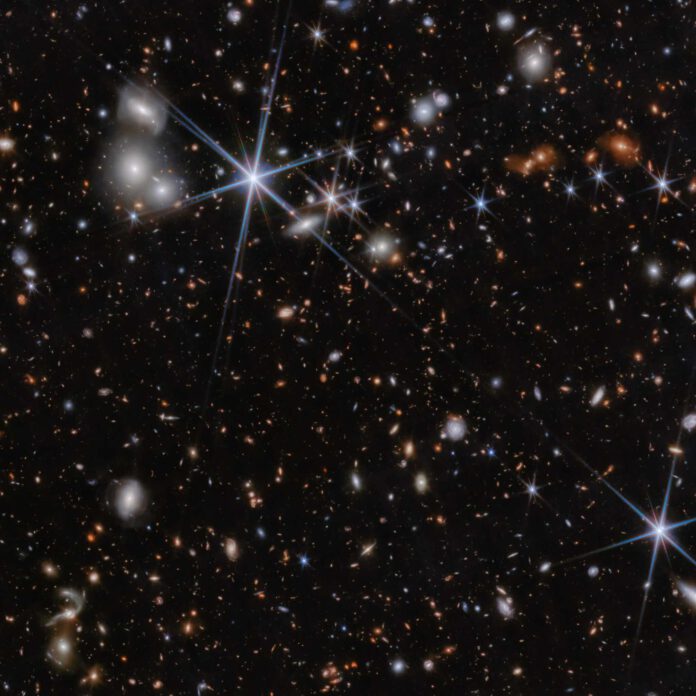
Record-Breaking Discovery
For the first time, researchers have observed black hole mergers at such a large distance and an early stage in the universe’s history. These observations are remarkable not only for their scale but also for the potential insights they offer into the mysterious growth of black holes in the nascent universe.
New Observations by James Webb
The latest observations from the James Webb Space Telescope have revealed a pair of merging supermassive black holes. One of these black holes is about 50 million times the mass of our sun. “The mass of the other black hole is likely comparable,” says researcher Roberto Maiolino. However, this black hole is heavily obscured by dense gas, making precise measurement challenging.
Looking Back in Time
What makes this discovery particularly extraordinary is that James Webb captured this merger occurring about 740 million years after the Big Bang, marking the earliest and most distant black hole merger ever observed.
Valuable Insights
These observations are highly valuable as scientists continue to grapple with the origins of supermassive black holes (black holes with masses greater than 100,000 solar masses). Such black holes are prevalent in the local universe, including one at the center of our own galaxy. However, their rapid growth remains a subject of scientific inquiry. One theory suggests that these black holes originate from the collapse of massive stars, forming black holes that are hundreds of times the mass of our sun. These black holes then grow by accreting surrounding matter, eventually becoming supermassive. This process, however, is thought to take millions to a billion years. Remarkably, recent James Webb observations indicate that supermassive black holes existed as early as 400 million years post-Big Bang, challenging current theories on their rapid growth.
Merging Black Holes Throughout Time
While this discovery doesn’t solve the mystery entirely, it provides a glimpse into a significant growth mechanism, according to researcher Hannah Úbler. “Our results suggest that mergers could be a key way black holes grew rapidly even shortly after the universe’s inception.”
Detecting Invisible Black Holes
James Webb didn’t spot these black holes directly, as black holes are completely black; their gravity is so intense that it prevents even light from escaping, rendering them invisible. However, researchers can infer their existence from the impact black holes have on their surroundings, which is how these distant black holes in the young universe were discovered.
Tip of the Iceberg
“Thanks to Webb, we now know that lighter systems detectable by LISA are much more common than previously thought,” says ESA project scientist Nora Luetzgendorf. “We may need to revise our models. This is just the tip of the iceberg.”
Future Research
This breakthrough was made possible by the NIRSpec Integral Field Spectroscopy instrument. The research team has recently been granted additional observation time to study the relationship between massive black holes and their host galaxies in the first billion years after the Big Bang. This is significant, given the high demand for the James Webb Space Telescope. The team will focus on black hole mergers, aiming to uncover more about gravitational waves and the evolution of black holes in the early universe.











